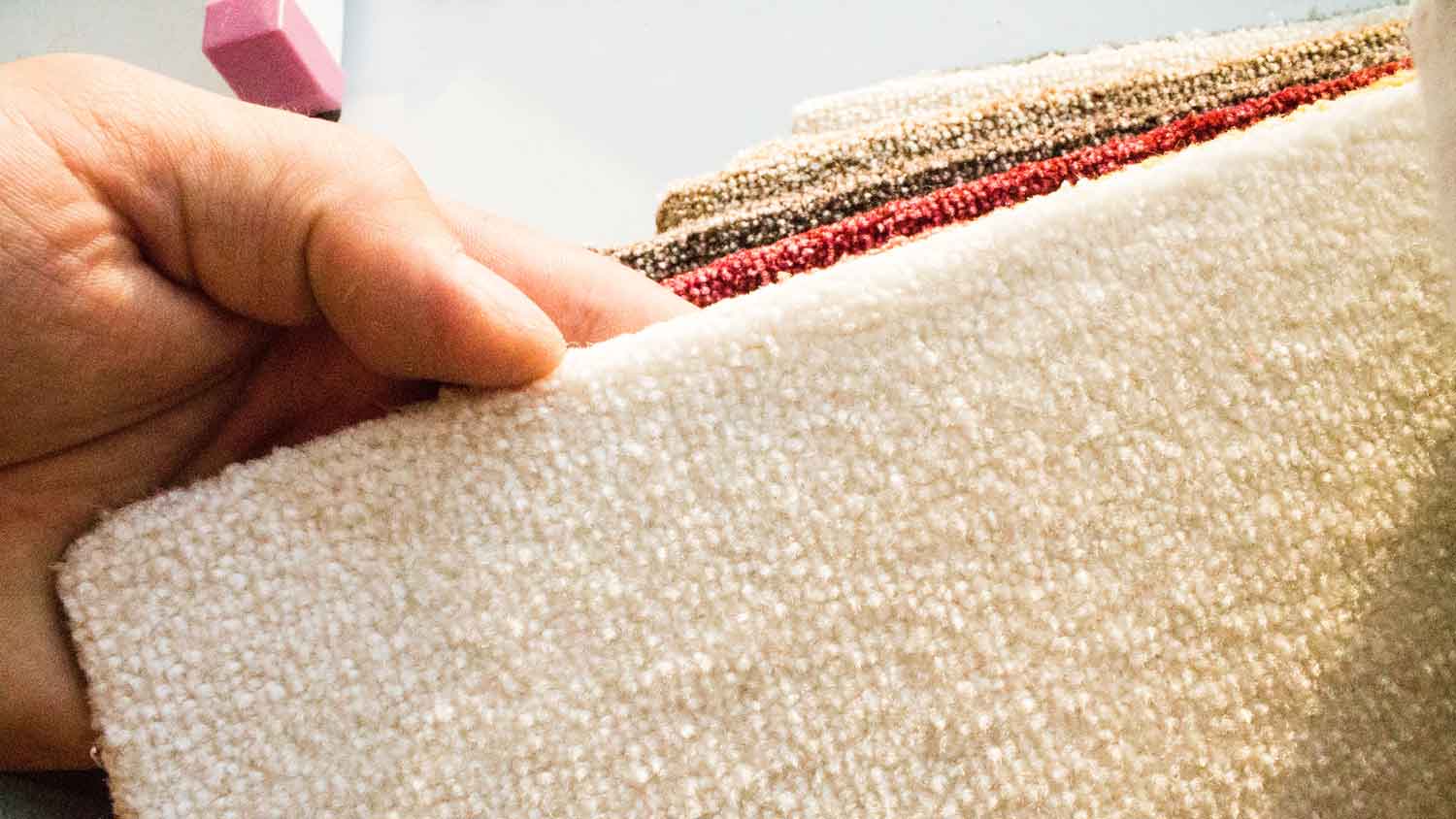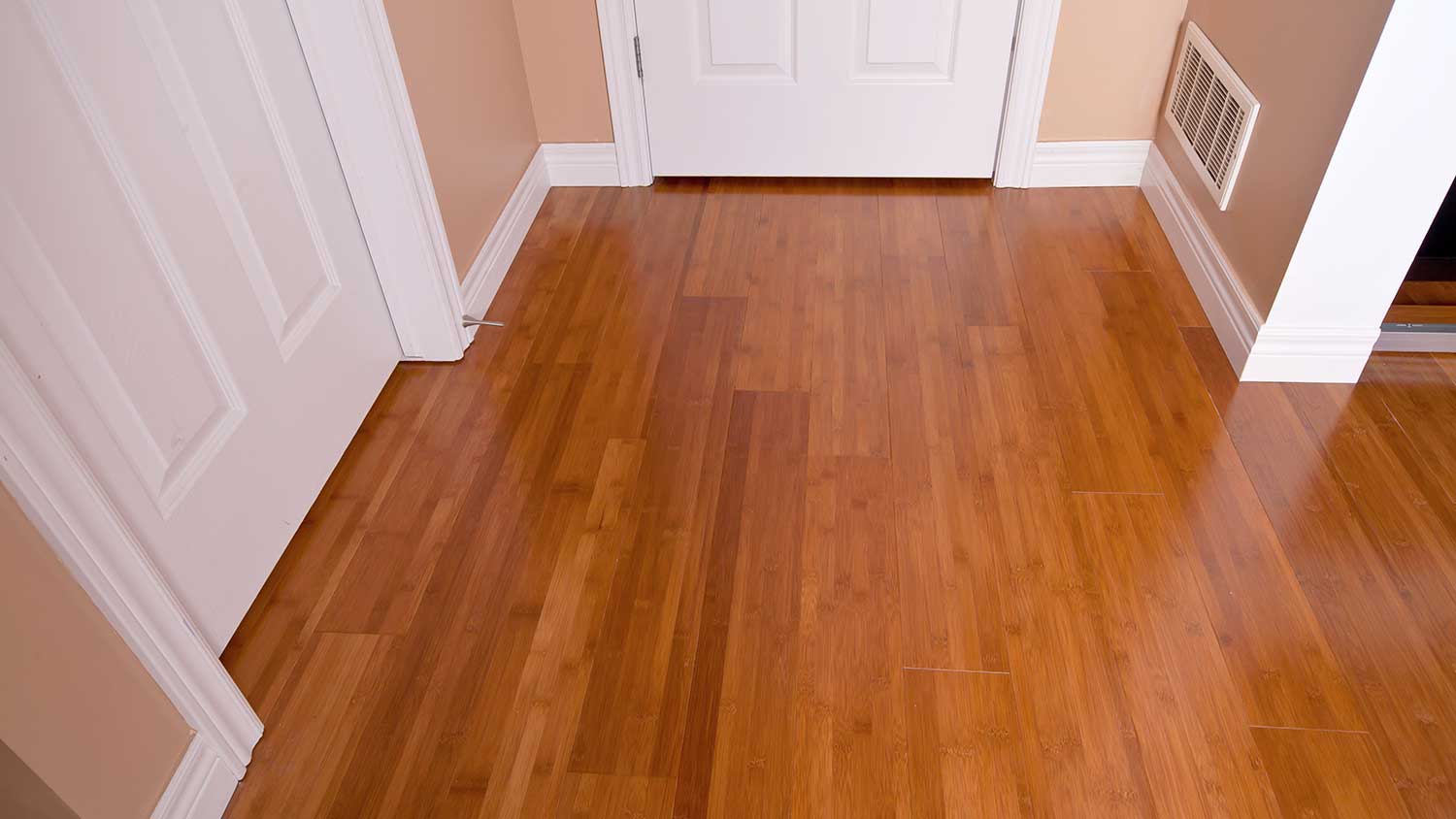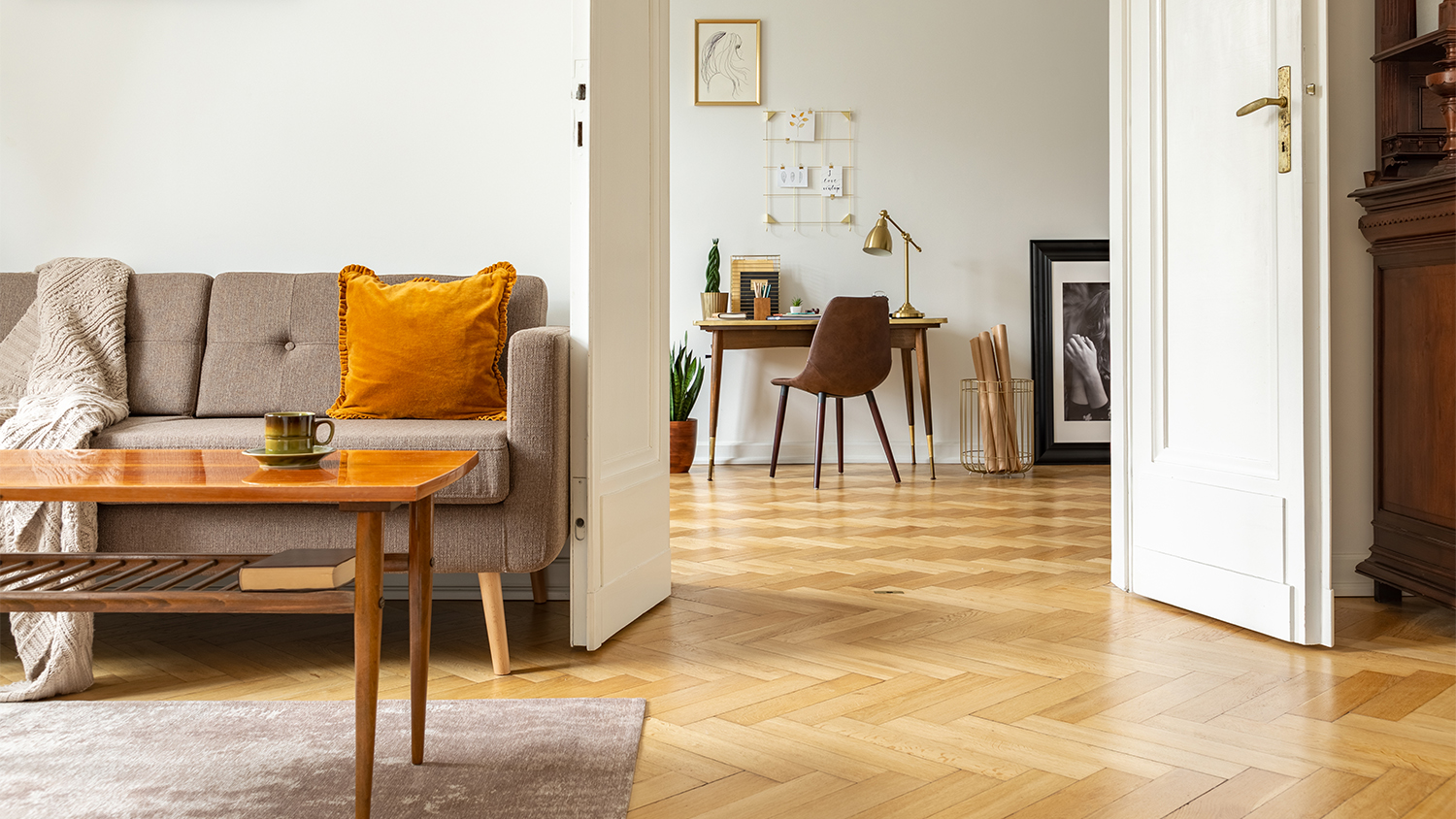
Looking for a more eco-friendly flooring option? Learn how much Marmoleum® flooring costs and what factors can affect the price of installation.
Laminate and hardwood floors appear similar to the untrained eye, but you can learn to spot the difference in look and performance


Laminate floors are a synthetic product designed to look like wood.
Hardwood floors are available in both solid and engineered plank.
Both types of flooring are available in a wide array of styles.
Laminate is more affordable and easier to install and maintain.
Hardwood lasts longer and is a better long-term investment.
When you’re on the hunt for new floors for your home, you’ll likely come across laminate and hardwood. While they may look similar at first glance, these two flooring types are distinct when it comes to performance. Learn the pros and cons of each so you can choose the best one for your home.

Laminate flooring is a synthetic product designed to mimic the appearance of natural hardwood planks. What looks like a wood surface is actually a photographic image layer, sometimes with a built-in wood grain texture, atop several layers of fiberboard and resin. It is versatile and can be installed in most areas of the home.
Tongue and groove joints on each plank for easy, adhesive-free installation
Pre-finished for immediate use after installation
Countless options for color, texture, and appearance
Highly durable, moisture-resistant, and easy to clean
Laminate flooring is affordable; costs start at $0.70 per square foot
Synthetic wood-look designs repeat across planks
Cannot be refinished or repaired easily
Doesn’t add resale value to the home
Not recyclable or sustainably disposable

Hardwood flooring has a long tradition of use in home design and is available in two primary types today:
Solid hardwood flooring consists of planks that are each produced from a single piece of natural wood and can be purchased either unfinished or prefinished.
Engineered hardwood flooring is made up of several layers of real wood or plywood with a thin layer of prefinished solid hardwood on the surface.
Both types offer different benefits and drawbacks, but there is overlap in their performance and appearance. Hardwood can be installed in any room that doesn’t experience high levels of moisture or humidity.
Natural wood surface offers unique grain textures and appearance on every plank
Countless options for wood species, color, finish, width, and installation pattern
Able to be refinished multiple times for easy repairs and a decades-long lifespan
Sought after by homebuyers for a high return on investment
Organic for sustainable disposal and recycling
Costs more than some other popular types of flooring
Difficult and time-consuming to DIY
Requires special care to maintain the finish
Doesn’t withstand moisture or high humidity
Let’s see how hardwood and laminate stack up against one another.
From a distance, laminate and hardwood floors may look very similar. But look closely and you’ll notice laminate planks do not share the same tremendous variation in texture and wood grain as planks of solid or engineered wood. In fact, no two planks of hardwood will appear exactly alike.
Any individual laminate flooring product will offer a limited number of unique plank designs. Higher-quality products may boast more variation per box, but repetition is unavoidable. On average, you’ll see identical patterns repeated every five planks. Manufacturers will sometimes recommend mixing boxes to help installers avoid placing the same pattern side by side.
Most visually appealing: Hardwood
Thanks to a flooring industry that is constantly innovating, you’ll find a near-endless array of design options no matter what type of floors you choose for your home. Both hardwood and laminate flooring can be customized to fit in with your color scheme and decor style.
If you’re looking for the unmistakable look and feel of a natural wood surface, choose hardwood. Laminate offers more affordable wood-like looks and can also mimic the look of tile or stone.
Most customizable: It’s a tie!
Durability varies widely from product to product, even within the same flooring category. Solid hardwood can be made from a variety of different wood species that range in hardness, with softwoods tending to dent more easily. Most laminate flooring features a finish that is harder than natural wood, making it highly resistant to moisture, staining, and fading for up to 20 years.
Hardwood may not be as resistant to these common forms of wear and tear, but with proper care and a well-maintained finish, it can be comparable in durability and last just as long. Additionally, solid hardwood can be sanded and refinished several times throughout its lifespan, allowing it to last for decades—or even generations—without the need for replacement.
Most durable: Hardwood
Hardwood floors usually cost between $5.50 and $12 per square foot for the material without installation and finishing. Prices will vary depending on the type of wood you choose because stronger woods and exotic species tend to be more expensive.
In most costs, laminate flooring is the more cost-effective choice at $0.70 to $2 per square foot. The price depends on the thickness of the plank and its durability.
Easiest on your wallet: Laminate

One of the simplest DIY installation options is a floating laminate floor. Laminate plank can be installed on any level of your home and can float over most existing floors without the need to tear them up. The tongue and groove joint design easily clicks and locks into place, and there’s no need to finish or sand the surface when you’re done.
Prefinished engineered hardwood can be similar to laminate, but solid hardwood is more difficult for DIYers. Installation can take several days even for contractors, especially if you’re installing unfinished planks. For both laminate and hardwood, you can expect the best results when you go with professional installation from a local flooring pro.
Easiest to install: Laminate
Unlike most floors, hardwood can experience minor dents and scratches and actually increase in value. This aesthetic wear can emphasize the unique appearance and depth of the wood grain, which is valued by many homebuyers. That said, solid and engineered hardwood floors can both be sanded down and refinished relatively easily, even on the level of individual planks.
Laminate flooring cannot be refinished and isn’t easily repaired if damaged. In a floating installation, scratched or chipped planks can be removed and replaced individually. If glued down, repairing it is nearly impossible and costs for repairing laminate are higher.
Easiest to repair: Hardwood
Cleaning laminate floors requires little more than regular sweeping, dry mopping, or wiping with a damp cloth. Always clean spills as soon as possible using a clean, damp cloth. You can also reduce fading by closing blinds and shades and by periodically rotating rugs and furniture so your floors wear evenly.
Hardwood floors require similar care, but should also be treated using special hardwood cleaners as recommended by their manufacturer. This will preserve the finish and restore its shine. Universal cleaners will do the opposite, instead making the finish appear dull and possibly damaging your floors.
Easiest maintenance: Laminate
Solid hardwood flooring is made of organic material that expands and contracts with changes in your home’s humidity and temperature levels. The layers of engineered hardwood flooring offer more stability, making it preferable to solid wood in warm or humid climates. You can also install engineered wood below grade in a finished basement, which you cannot do with solid wood.
That said, neither type of hardwood should be installed in bathrooms or kitchens, where moisture is common. Most laminate floors offer high moisture resistance and can be safely installed in just about any room. However, you should still carefully read the warranty and manufacturer recommendations for any product before installing to avoid costly mistakes.
Better moisture resistance: Laminate
The average laminate floor will last a maximum of 20 years, which is the time it usually takes for a family to wear down the floor’s finish. Laminate cannot be sanded or refinished at any point during this lifespan, so once the finish is worn down it will need to be replaced.
Well-maintained solid and engineered hardwood are both able to last a lifetime, and each can be refinished when worn. Solid hardwood can typically be sanded up to seven times, while engineered hardwood can be sanded up to four. The average time between each sanding is 10 to 20 years.
Longest lifespan: Hardwood
Hardwood planks range in composition from mostly to completely organic, so they can be disposed of or recycled without risk of damage to the environment. Strict industry standards ensure that most hardwood manufacturers are producing flooring that contains no organic carbon emissions and glues free from harmful chemicals.
Laminate floors, on the other hand, are made entirely from layers of synthetic material bonded together by glue. There are high-quality non-toxic laminate floors on the market, but you’ll want to check manufacturer websites and product labels to ensure that you’re buying an eco-friendly product. Regardless, laminate flooring cannot be recycled.
Most sustainable: Hardwood
Installing new floors will always boost the look and potential resale value of your home in the short term. If you’re not planning on selling in the near future, however, a hardwood floor is a better long-term investment.
Hardwood can last for generations, and the majority of homebuyers would prefer to invest more in a home with real hardwood floors. The lower cost of laminate floors and their shorter maximum lifespan won’t enhance your home’s value.
Better ROI: Hardwood
From average costs to expert advice, get all the answers you need to get your job done.

Looking for a more eco-friendly flooring option? Learn how much Marmoleum® flooring costs and what factors can affect the price of installation.

Cork is a good option if you want a beautiful, natural floor. Here are all of the cork flooring costs you can expect as you plan your project.

The cost to rip up carpets and install laminate depends on factors like labor prices, materials, and location. Use this guide to get a detailed cost overview.

Discover the cost to install indoor-outdoor carpet. Learn about average prices, key cost factors, and tips to save on your next flooring project.

Updated flooring can make any room in your home feel brand new. Explore flooring installation costs in Boston, MA, from materials to labor costs.

Updated flooring can make any room in your home feel brand new. Explore flooring installation costs in Phoenix, AZ, from materials to labor costs.